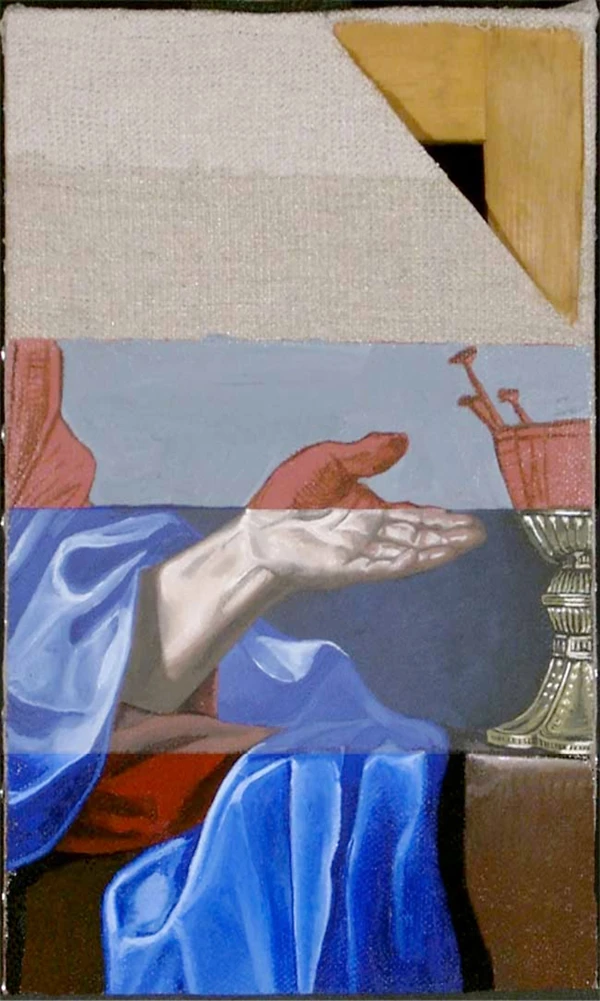Under the layers of a seventeenth century painting
Seventeenth century oil painting on canvas
Under the layers of a seventeenth century painting
An interactive look at how oil paintings were produced in the seventeenth century.
Below is an example of a seventeenth century oil painting on canvas showing typical materials and techniques developed by artists in Italy during the Renaissance. Some are still used by artists today.
There are many processes required in producing oil paintings; from bare canvas to finished work of art.
Click on the links below to find out about the layers that make up this seventeenth century painting.

1. Stretched canvas
This is a coarse textured, linen canvas stretched tight over a wooden frame and fastened with metal tacks. Using canvas allowed artists to make bigger paintings. It is cheaper, lighter and easier to move than a wooden panel.
2. Glue size preparation
A thin coat of glue-size made from animal skin and water is brushed on. It prevents the canvas from absorbing oil, which would make the priming dry and brittle.
3. Oil priming and under-paint
A thin, flexible priming made from mixing red pigment with oil. This stops the paint being absorbed by the canvas. Here the artist has roughly sketched the design on top of the priming and under painted some areas such as the sky.
4. Oil paint layers
This image is created using oil paints. This allows artists to use larger brushstrokes and blend colours. Highlights are thick and opaque. Look at how the red priming affects the painting's tone, especially in the shadows.
5. Varnished painting
The oil paint is left to dry for at least a year before a thin coat of clear picture varnish is brushed on. During the seventeenth century artists started making varnish from tree resin dissolved in turpentine. It protects the paint surface and makes it easier to see the colours.